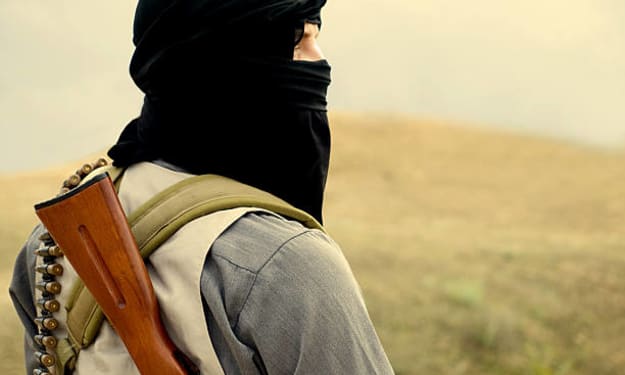America's cocaine habit fuels it's migrant crisis
Cocaine and the Border: How America's Choices Shape Its Migrant Reality

It's the US Coast Guard intercepts a shipment of cocaine. Here, the same team stops another... and another. It all happened in the summer of 2018. They seized more than 9,000 kilograms of cocaine, which was on its way to the United States. It may sound like a lot, but it's only the tip of the iceberg. In 2017, the coast guard detained almost 227,000 kilograms of cocaine here. In the eastern Pacific Ocean.
This is because the United States is the largest consumer of cocaine in the world. And to reach the United States, most of the cocaine has to go this way through Central America and Mexico. With that comes violence, and today Guatemala and Honduras are some of the most violent places in the world. This is a big reason why so many people travel north to seek refuge at the US-Mexico border. But the story of the Central American crisis is not just about America's demand for drugs.
Another big part of it...is America's drug testing. Cocaine is produced in South America in the Andes mountain range that stretches from Bolivia to Colombia. Since the mid-1970s, most of the world's cocaine has come from here; distribution groups such as the Medellin Cartel led by Pablo Escobar. But they had to get their product here in the US. In the late 80s, Americans spent tens of billions of dollars annually on cocaine. And so they did: the cartels sent boats and planes loaded with cocaine through the Caribbean to South Florida.
For example, the Escobar cartel flew cocaine mainly from Medellín to the Bahamas and later to Miami. "Miami is one of the headquarters of Cocaine Inc. That must be four or five times more cocaine than we've ever seen... The drug has killed at least 34 people in South Florida this year." So the US rejected the Caribbean way. "I propose to spend over a billion and a half dollars to ban these drugs.
They started bringing shipments ashore. Like that speedboat that was stopped by the Coast Guard. And they worked with the Colombian government to destroy coca and fight the Colombian cartels. The Caribbean route was eliminated, but the cocaine industry continued. All the cartels needed was a new route to the United States, and they found it in Mexico. Mexican cartels already had ways to get drugs across the border into the United States. So the Colombian cartels sent their cocaine to Mexico, but their boats and planes had to stop somewhere along the way to avoid detection and refueling.
And the perfect stop was Central America, especially Honduras and Guatemala. Those countries were not just south of Mexico, but had just gone through decades of civil wars and foreign interventions. Their governments were weak and easily bought, and power was held by criminal organizations. It was an easy place for the cartels to turn. Back in Mexico, the new cocaine routes became profitable and fast. Mexican cartels grew and became stronger and began to control more territory. And the government responded... "It's war! 10,000 federal troops and police in Juarez. Mexico invaded with American help. "He won't let drug dealers take over his country. "This repression was largely a failure.
This led to chaos and violence. But that made it difficult to ship cocaine directly to Mexico. So the cartels began transporting cocaine to Central America, to coastal landing sites and taking it overland to Mexico. Central America was no longer just a stop on the road. Suddenly, it found itself at the center of the cocaine trade. And all the things that made Central American countries ideal gas stations also made them vulnerable to drug-related violence. Criminal organizations already powerful in their own country began to form alliances with Mexican cartels.
In Guatemala, this group aligned with the Zetas, while the latter lined up with the rival Sinaloa Cartel. Violence has increased here: on the northern coast of Honduras, where cocaine shipments arrive, and at the border, where cocaine is transported north overland. As the violence escalated, it was now Central America's turn to oppress the entire region… Governments have adopted tough policies to fight not only drug traffickers but all organized crime.
Policy again supported by the United States: "Find ways we can develop more aggressive action plans to improve security. We have a shared responsibility to combat drug trafficking." The newly militarized police force made thousands of arrests, prisons were full, but the violence did not stop. And that's where we are today. In Honduras and Guatemala, the number of violent deaths equals that of active war zones. And thousands of migrants take dangerous routes through Mexico to the United States to escape instability and violence.
For decades, the United States has tried to keep drugs off the market, but they have only succeeded in changing how the drugs come to market. And Central America may be the place that feels these changes the hardest.
Like what you read? Consider liking and subscribing for more! :)






Comments (1)
Nice story. Can create a stripe account for me for 20 dollars?